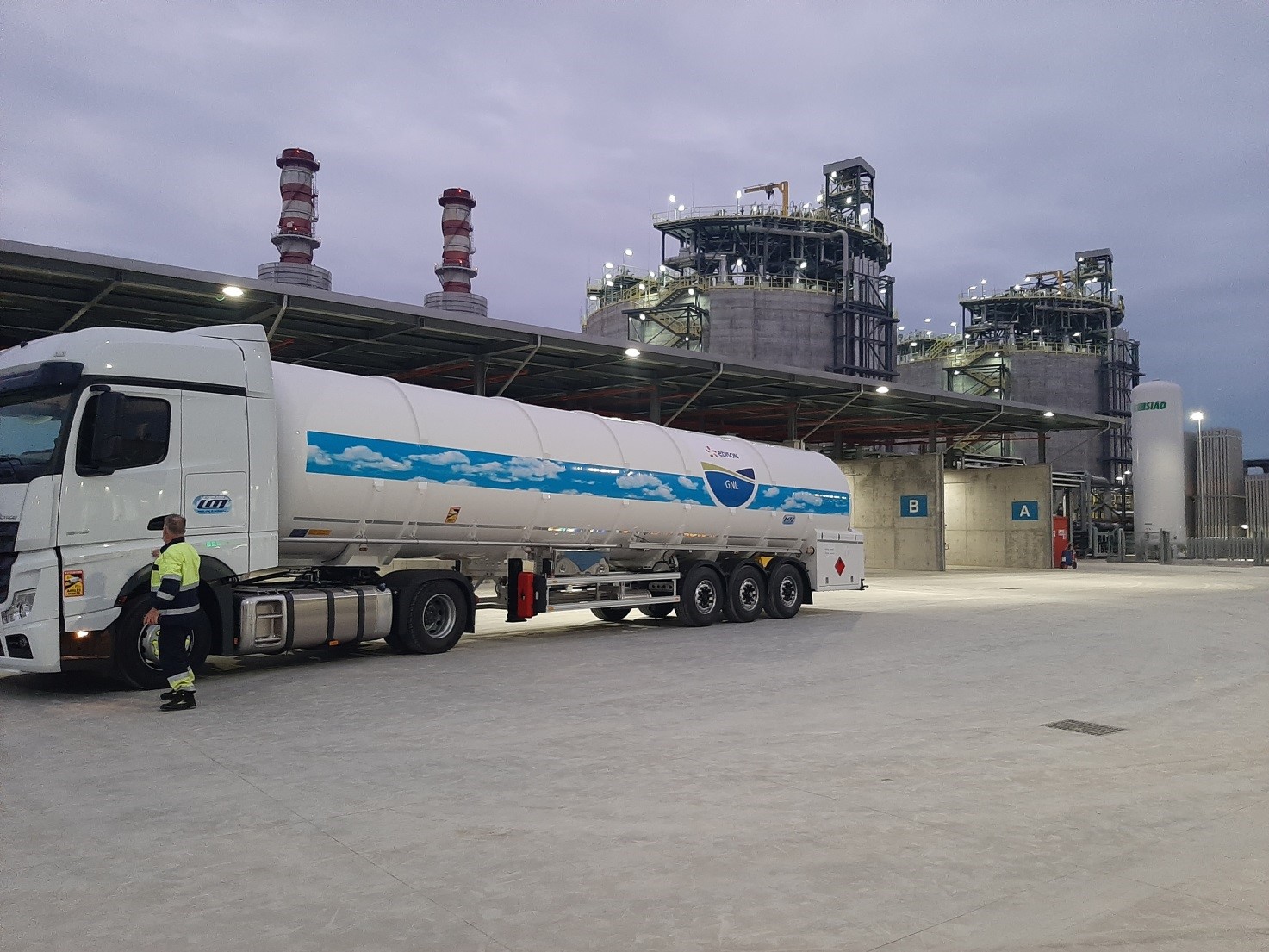
The inauguration of the first coastal depot for the primary supply of small-scale LNG in mainland Italy, and in southern Europe, which took place last October 26 in the port of Ravenna, marks the overcoming of the main limit that conditioned the development of direct uses of the liquid natural gas in our Country. Delayed especially for refueling stations in the south: 64% plants in the North, closer to foreign depots, 25% in the Center, only 11% in the South, according to data from Ref-E, which analyzes the market every six months.
Built with an investment of approximately 100 million euros, the DIG plant (acronym for Depositi Italiani GNL) is 51% owned by the Italian Petrolifera Italo Rumena (PIR), 30% by Edison and 19% by Scale Gas, subsidiary of the Spanish Enagás, and has a storage capacity of 20,000 cubic meters of LNG and an annual handling capacity of over 1 million cubic meters. It will be able to power up to 12,000 trucks and 48 ferries per year. During its operation it will make it possible to avoid the emission of 6 million tons of CO2 and to eliminate those of particulate matter and sulfur oxides. The presence in Ravenna, the historic hub of the italian national natural gas industry, is significant.
DIG will manage the plant, Edison will supply the depot through Ravenna Knutsen, the largest of the small-sized LNG tankers (30,000 cubic meters) with great operational flexibility, built by the Norwegian shipowner Knutsen OAS Shipping and rented with a long-term contract. The supply of LNG at the regasification depot in the port of Barcelona is guaranteed by Enagas, which manages the plant.
The LNG stored in the depot will be sold to third parties for 15% by DIG, while Edison will have 85% to be allocated to end use, as an integrated operator from the supply of LNG to its sale. In this way, Edison completes the first integrated logistic chain in Italy, competing with land supplies with tankers, especially from Marseille, to a much lesser extent from Barcelona and Northern Europe. It should be noted that tankers operating in Italy can transport approximately 5% more LNG than those operating from France.
The construction of the coastal deposit was entrusted to Edison's engineering which, despite the situation pandemic caused by Covid-19, delivered the plant in the 28 months provided for in the roadmap of the construction site. During the construction phase, the plant saw the involvement of 60 local supplier companies, over 200 workers and 80 engineers who designed and followed the execution of all the elements of the terminal. For its construction, 30,000 cubic meters of concrete, 600 tons of steel were used and the ground was consolidated through 2,200 gravel piles and 180 reinforced concrete piles over one meter in diameter and 45 meters deep.
Enagás, one of the most experienced European companies in the treatment of LNG, supported Edison and DIG in the commissioning phase of their first plant. During the inauguration ceremony, attended by Stefano Bonaccini, President of the Emilia Romagna Region, Marcelino Oreja, CEO of Enagás, Guido Ottolenghi, CEO of PIR, Nicola Monti, CEO of Edison, recalled the other projects of coastal deposits in Santa Giusta-Oristano, in Sardinia, Brindisi and Naples in the south of Italy for which the authorization process is underway.
Source: Edison
 EN
EN  it
it

